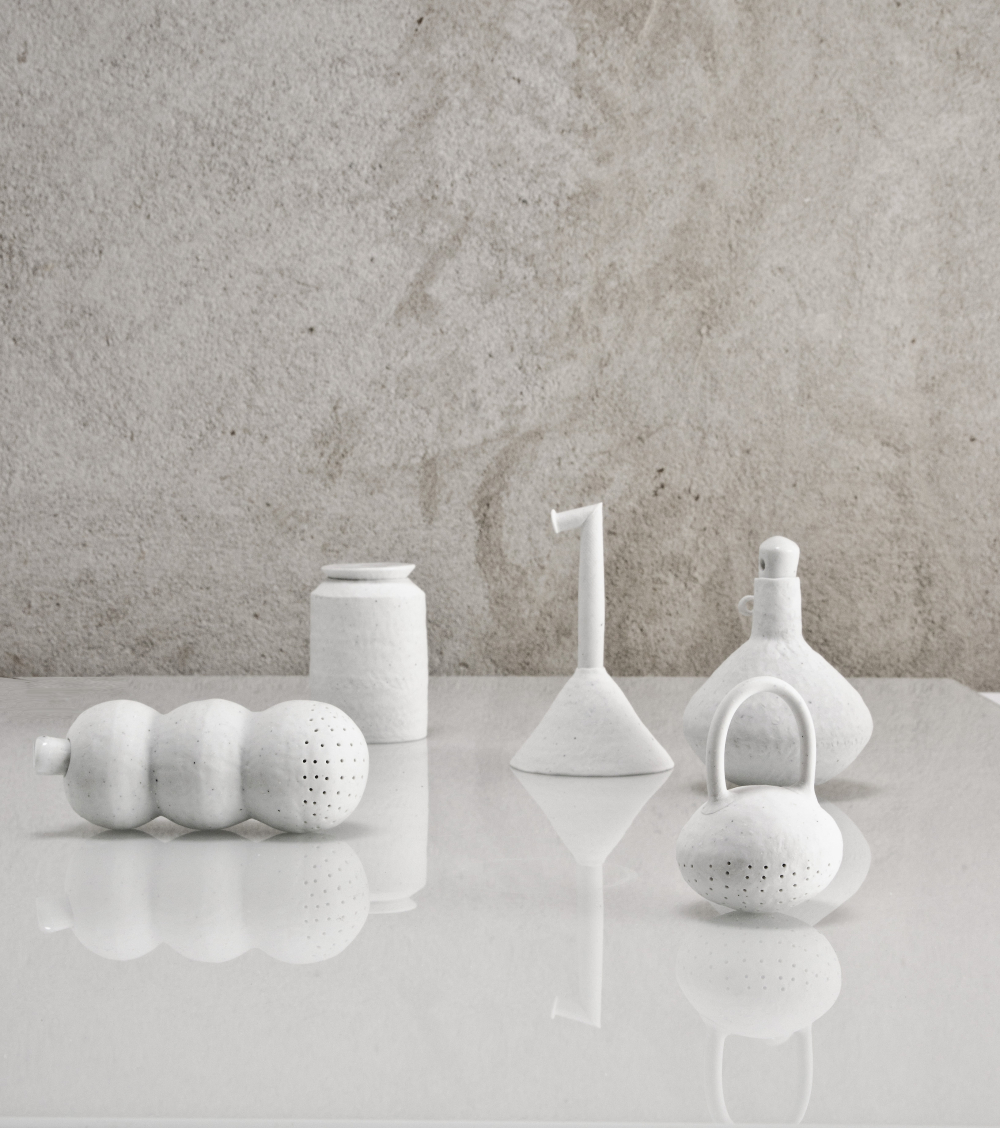Past Tense: Contemporary Korean Ceramics
For many Korean ceramists, Yung-Jae Lee’s 2006 exhibition ‘1111 Schalen’ at the Pinakothek der Moderne, Munich stands as a defining moment in contemporary craft. The monumental installation, consisting of 1,111 handmade earthenware bowls placed directly on the floor of the museum, was based on a study of the Maksabal - the most common bowl in Korean cuisine, and a highly symbolic (and evocative) everyday object. Ranging in shape and size, texture and colour, each of Lee’s vessels reimagined the traditional Maksabal slightly differently, probing its social and aesthetic significance via a multiplicity of forms - inverting centuries of ceramic practice focused on the pursuit of aesthetic ideals, while thrilling audiences and critics alike.
Sixteen years on, and it is clear Lee’s work has influenced a generation of ceramic artists, who likewise address the weight of tradition head-on, as something to be negotiated critically and creatively. To some extent, this is the result of cultural pressures. As the art historian Paul Greenhalgh has observed, contemporary ceramics grapples with the memories of the history of pottery as they exist today. For East Asian ceramicists who contend with a long and varied ceramic tradition, this is especially true, since the enduring popularity of traditional forms makes it practically impossible to work without the repetition of existing aesthetic elements.
The freedom to disrupt this status quo, and find new ways forward from within a system still fixated on the past, comes from the legacy of post-modernism, which sought to dismantle the boundaries between art object and craft object through a critique of hierarchy and binarism, while questioning the very notion of genre in the craft tradition itself. Although the impact of such discourse on established markets is still open to debate, it is undeniable that traditional crafts like ceramics have gained exposure and attention in fine art contexts in light of their post-modern reconsideration, and today ceramicists move fluidly between the fine art and design worlds, while their works blur the lines between aesthetics and utility via ever more sophisticated conceptual strategies.
The works in this exhibition are representative of just such complex production - evidence of the diverse ways in which a rich cultural heritage can be rewired to create something new: engaging with traditional materials, techniques, forms and patterns to explore questions of national cultural identity and expression as they exist today, while also moving beyond this into dialogue with global ceramic cultures.
Jihyun Kang for instance, deals with the aesthetics of porcelain from the Joseon Dynasty (1392-1910), which, influenced by Confucian social ideas and literary culture, strove for a spare, yet elegant expressionism, free of ornamentation. Appropriating well-known Joseon archetypes, such as the Moon Vase, traditionally thought to embody a certain purity through its sober plain white and restrained form, Kang’s contemporary interpretations problematise such clichés and expose the racial sentiments often attached to craft production, such as the association of Joseon ceramics with the stereotype of Korean people as “the white-clad people” or “the people of white clothes”.
Kiho Kang on the other hand, winner of several international awards, employs traditional methods to produce ambiguous geometric objects. Painstakingly built up layer by layer using the bead technique - a type of clay construction notably used for onggi (the traditional kimchi and soy sauce storage container), and requiring great technical sophistication - Kang’s vessels are characterised by haptically perceptible, sandy surfaces and muted, pastel colouring. Despite their tactility, and uncannily familiar, everyday forms, there is also an otherworldly feeling to Kang’s ceramics, shifting between cold and warmth, artifice and nature, and emptiness and fullness.
For Soo Jong Ree, working with ceramics begins with an understanding of the nature of material: namely the clay that he traditionally digs and processes himself in the Korean mountains. Unusual today, this extreme commitment to the very physicality of the medium, is carried through to his works by means of a robust, gestural expressionism, both in the construction of his forms and their decoration, that is often said to invoke the spirit of 15th century Buncheong pottery; a white painted, blue-grey stoneware, with spontaneous yet technically accomplished and unpredictable mark-making. Ree’s works transform this legacy into a language of signs, at times constructive and at others decaying - the omission of glaze leaving patches of coarse clay visible in the surfaces of the work, contrasting with layers of thickly glazed white engobe, and vigorously applied iron-brown pigments.
Yougyung Sin likewise experiments with Buncheong methods, including inlay, incising, sgraffito and dipping in liquid engobe.
Myoungseung Cha translates traditional blue painting motifs, well known as blue and white porcelain, into the language of contemporary illustration; in some cases even including emojis into her designs.
Sinhyun Cho’s complex, patented neriage ceramics test the limits of the technical possibilities of coloured clay.
Soyul Baek’s neriage works, striking on account of their perfect symmetry and flawless surface, use colour to reflect the linearity determined by the potter's wheel.
Hogyu Son’s colourfully glazed, twisted and deformed objects humorously refer to traditional decorative vases.
Sat. 1 Oct. 2022 at 5:00 pm
Brunngasskeramik
Brunngasse 9, 8001 Zurich
OPENING HOURS: 1 Oct. - 29 Oct. 2022
NEUMART 17 Tue-Fri 9:00-18:30, Sat 10-17h
BRUNGASSKERAMIK Tue-Fri 12-18h, Sat. 11-17h
PS STUDIO Thurs. 16-18:30 h, Sat. 11-17 h
Or by appointment 076 340 1448
Institutions
| Title | Country | City | Détails |
|---|---|---|---|
| Brunngass Ceramics, PS Studio | Suisse
|
Zürich
|
Zürich
|
